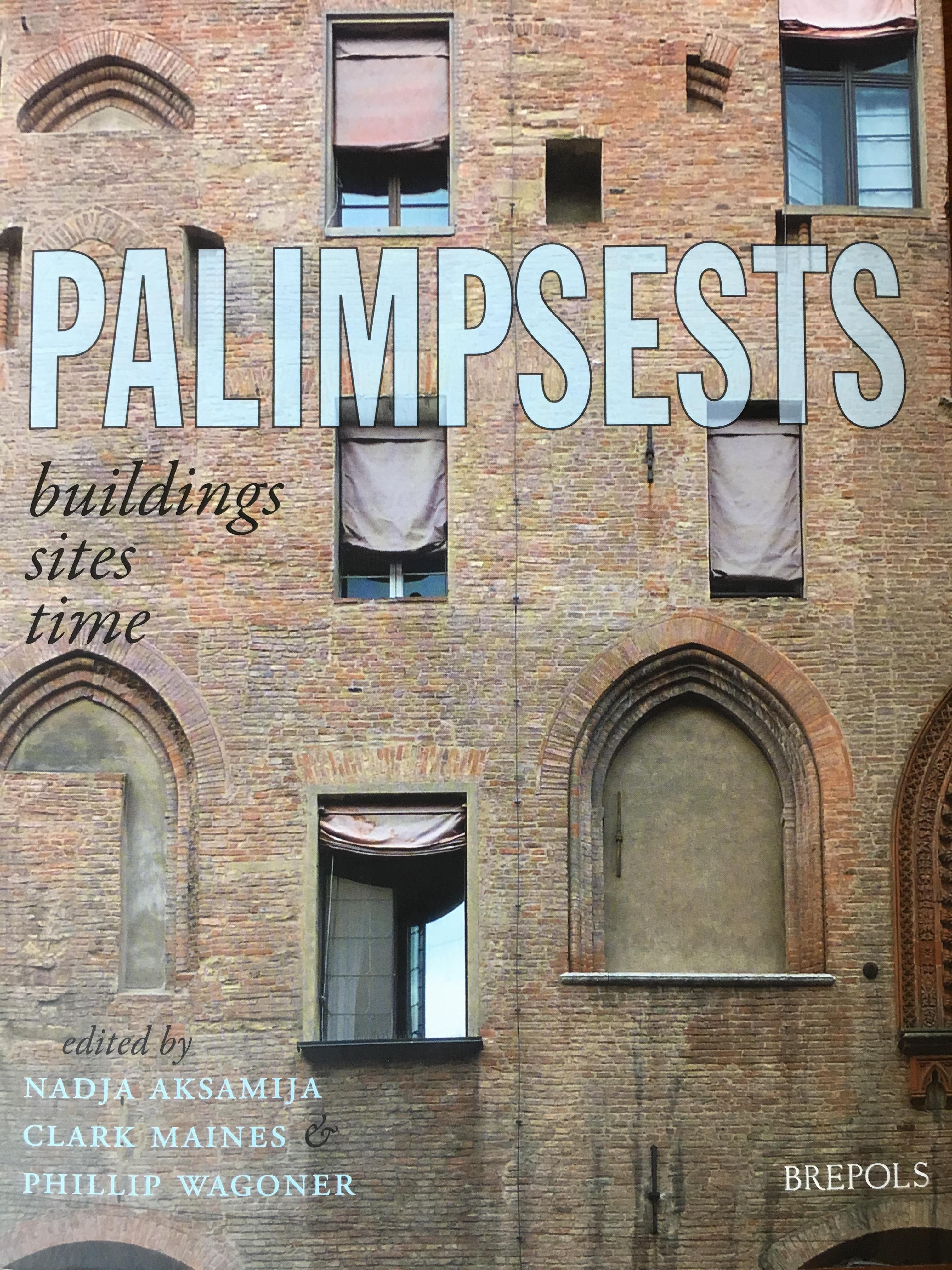-
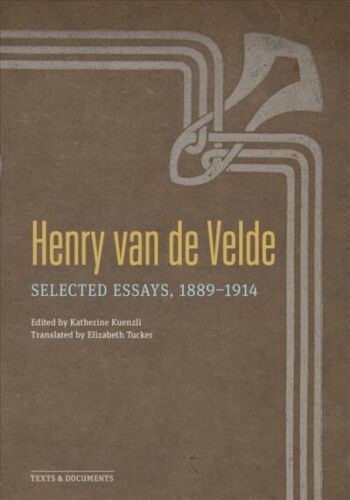
Henry van de Velde: Selected Essays, 1889–1914
Edited by Katherine M. Kuenzli, Professor of Art History
Translated by Elizabeth Tucker
Getty Publications, 2022The first English collection of writings by Henry van de Velde, one of the most influential designers and theorists of the twentieth century.
Belgian artist, architect, designer, and theorist Henry van de Velde (1863–1957) was a highly original and influential figure in Europe beginning in the 1890s. A founding member of the Art Nouveau and Jugendstil movements, he also directed the Grand-Ducal Saxon School of Arts and Crafts in Weimar, Germany, which eventually became the Bauhaus under Walter Gropius.
This selection of twenty-six essays, translated from French and German, includes van de Velde’s writings on William Morris and the English Arts and Crafts movement, Neo-Impressionist painting, and relationships between ornament, line, and abstraction in German aesthetics. The texts trace the evolution of van de Velde’s thoughts during his most productive period as a theorist in the artistic debates in France, Germany, Belgium, and the Netherlands. Katherine M. Kuenzli expertly guides readers to see how van de Velde’s writings reconcile themes of aesthetics and function, and expression and reason, throughout the artistic periods and regions represented by these texts. With introductory discussions of each essay and full annotations, this is an essential volume for a broad range of scholars and students of the history of fine and applied arts and ideas.
-
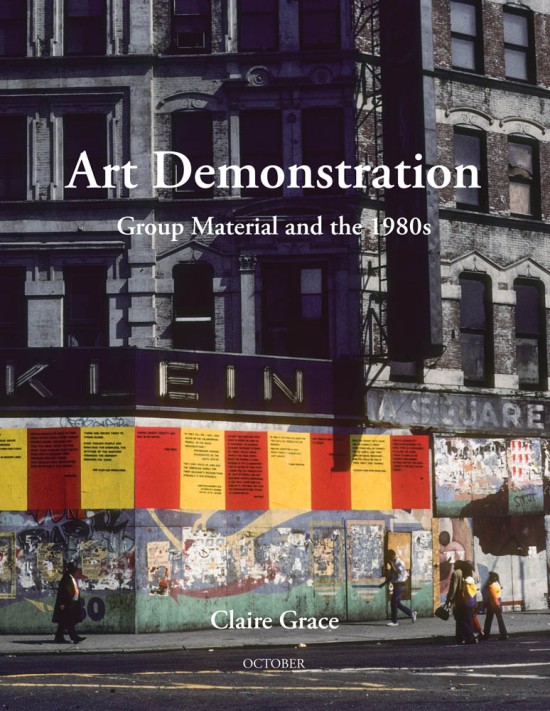
Art Demonstration: Group Material and the 1980s
Claire Grace, Associate Professor of Art History
MIT Press, 2022A study of Group Material, the influential but underexamined New York–based artist collective, investigating a series of key works.
Key predecessor of contemporary art's most radical activist gestures, the 1980s collective Group Material seized upon the temporary exhibition as a prime mode of intervention. Projects sited on walls, subways, and billboards targeted some of the most sensitive political conflicts of the era, from U.S. military interventions in Latin America to the AIDS crisis. In Art Demonstration, Claire Grace examines Group Material's New York–based collaboration across a decade that saw a wave of renewed interest in art as a domain of political mobilization. As Grace argues here, Group Material's art was never just a means to an end; looking itself held urgency.
Grace distinguishes between two types of Group Material projects: room-scale interiors featuring distinctive wall treatments, soundtracks, and boundary-crossing arrangements of objects, and works in spaces usually reserved for advertising. Grace analyzes the group's practice in both categories, examining such well-known projects as AIDS Timeline (1989) and Democracy (1988–1989) and lesser-known works including Subculture (1983) and The Castle (1987). Grace shows that the politics running through Group Material's practice ultimately resides in the artists' particular recourse to the exhibition form. With that bearing, Group Material's work insisted on the material in the face of postmodern theory's privileging of the discursive, and redistributed authorship within protean and pivotally diverse collective structures, testing in so doing the ever fragile contours of democratic participation as art became a commodity for speculative investment.
-
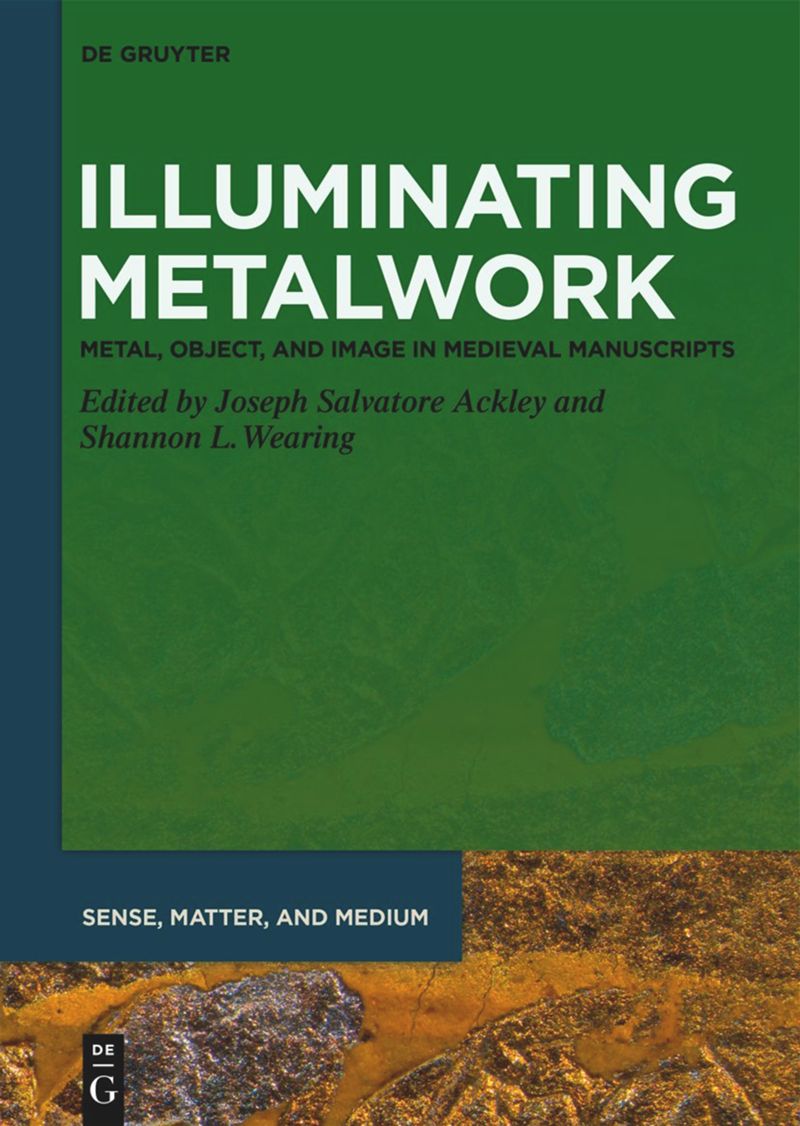
Illuminating Metalwork: Metal, Object, and Image in Medieval Manuscripts
Joseph Salvatore Ackley (with Shannon L. Wearing, eds.), Assistant Professor of Art History
De Gruyter, 2022The presence of gold, silver, and other metals is a hallmark of decorated manuscripts, the very characteristic that makes them “illuminated.” Medieval artists often used metal pigment and leaf to depict metal objects both real and imagined, such as chalices, crosses, tableware, and even idols; the luminosity of these representations contrasted pointedly with the surrounding paints, enriching the page and dazzling the viewer. To elucidate this key artistic tradition, this volume represents the first in-depth scholarly assessment of the depiction of precious-metal objects in manuscripts and the media used to conjure them. From Paris to the Abbasid caliphate, and from Ethiopia to Bruges, the case studies gathered here forge novel approaches to the materiality and pictoriality of illumination. In exploring the semiotic, material, iconographic, and technical dimensions of these manuscripts, the authors reveal the canny ways in which painters generated metallic presence on the page. Illuminating Metalwork is a landmark contribution to the study of the medieval book and its visual and embodied reception, and is poised to be a staple of research in art history and manuscript studies, accessible to undergraduates and specialists alike.
-
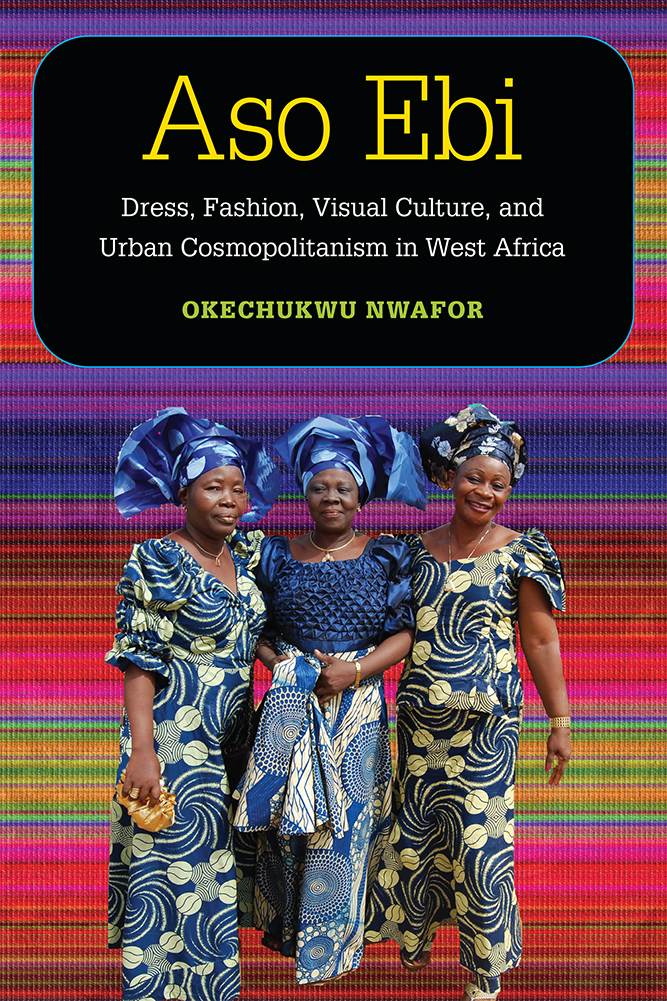
Aso Ebi: Dress, Fashion, Visual Culture, and Urban Cosmopolitanism in West Africa
Okechukwu Nwafor, Assistant Professor of Art History
Michigan Publishing, University of Michigan Press, 2021The Nigerian and West African practice of aso ebi fashion invokes notions of wealth and group dynamics in social gatherings. Okechukwu Nwafor’s volume Aso ebi investigates the practice in the cosmopolitan urban setting of Lagos, and argues that the visual and consumerist hype typical of the late capitalist system feeds this unique fashion practice. The book suggests that dress, fashion, aso ebi, and photography engender a new visual culture that largely reflects the economics of mundane living. Nwafor examines the practice’s societal dilemma, whereby the solidarity of aso ebi is dismissed by many as an ephemeral transaction. A circuitous transaction among photographers, fashion magazine producers, textile merchants, tailors, and individual fashionistas reinvents aso ebi as a product of cosmopolitan urban modernity. The results are a fetishization of various forms of commodity culture, personality cults through mass followership, the negotiation of symbolic power through mass-produced images, exchange value in human relationships through gifts, and a form of exclusion achieved through digital photo editing. Aso ebi has become an essential part of Lagos cosmopolitanism: as a rising form of a unique visual culture it is central to the unprecedented spread of a unique West African fashion style that revels in excessive textile overflow. This extreme dress style is what an individual requires to transcend the lack imposed by the chaos of the postcolonial city.
-
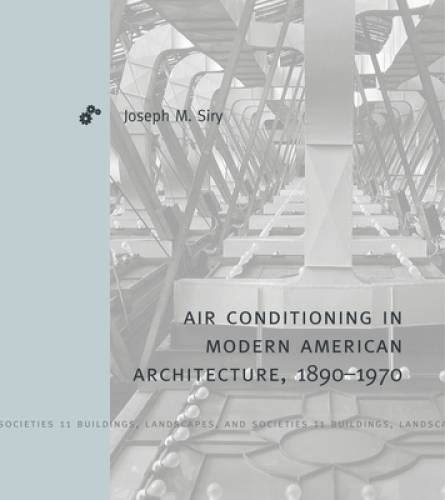
Air-Conditioning in Modern American Architecture, 1890-1970
Joseph Siry, Professor of Art History
Penn State University Press, 2021Air-Conditioning in Modern American Architecture, 1890–1970, documents how architects made environmental technologies into resources that helped shape their spatial and formal aesthetic. In doing so, it sheds important new light on the ways in which mechanical engineering has been assimilated into the culture of architecture as one facet of its broader modernist project.
Tracing the development and architectural integration of air-conditioning from its origins in the late nineteenth century to the advent of the environmental movement in the early 1970s, Joseph M. Siry shows how the incorporation of mechanical systems into modernism’s discourse of functionality profoundly shaped the work of some of the movement’s leading architects, such as Dankmar Adler, Louis Sullivan, Frank Lloyd Wright, Ludwig Mies van der Rohe, Gordon Bunshaft, and Louis Kahn. For them, the modernist ideal of functionality was incompletely realized if it did not wholly assimilate heating, cooling, ventilating, and artificial lighting. Bridging the history of technology and the history of architecture, Siry discusses air-conditioning’s technical and social history and provides case studies of buildings by the master architects who brought this technology into the conceptual and formal project of modernism.
A monumental work by a renowned expert in American modernist architecture, this book asks us to see canonical modernist buildings through a mechanical engineering–oriented lens. It will be especially valuable to scholars and students of architecture, modernism, the history of technology, and American history.
-
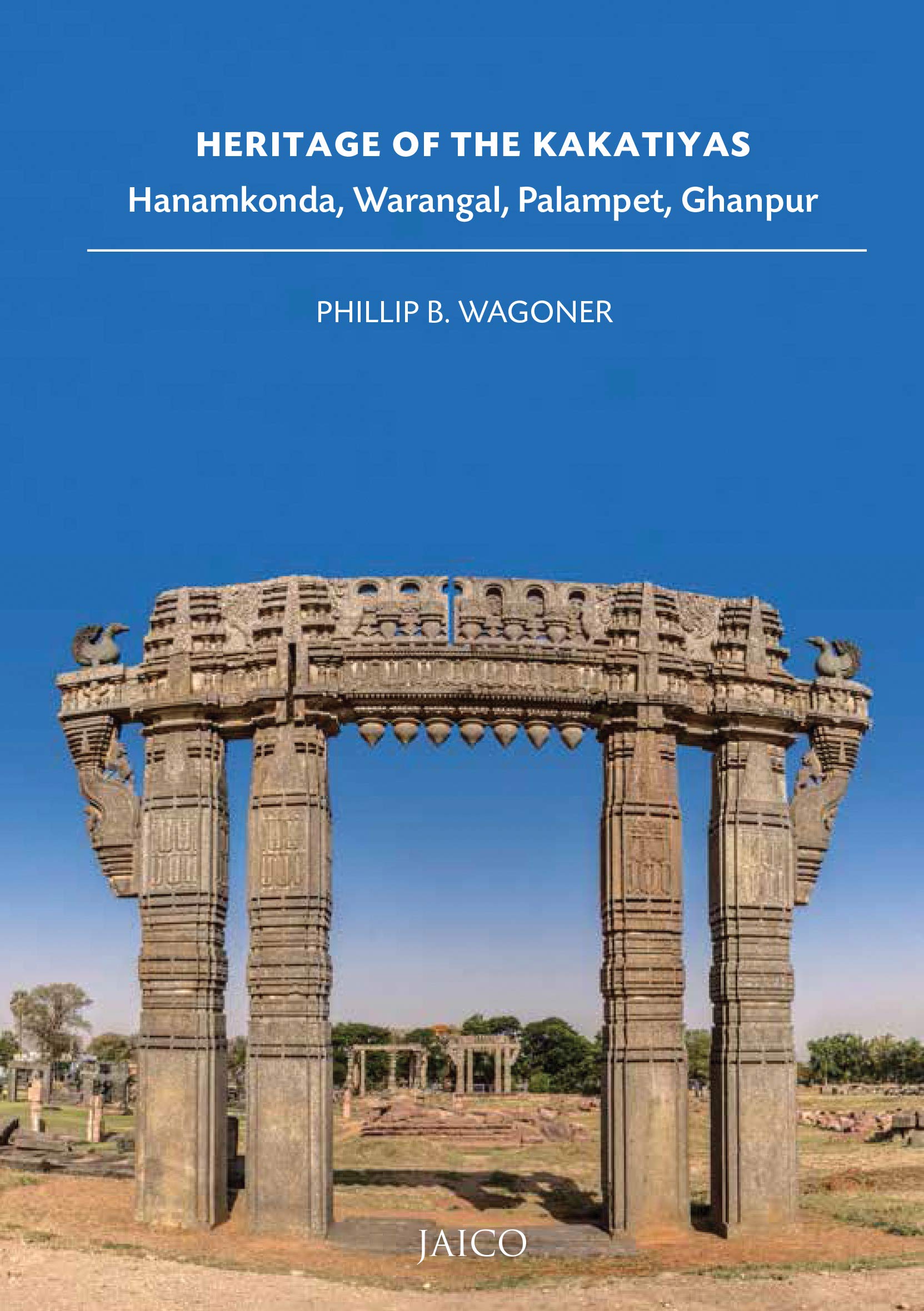
Heritage of the Kakatiyas: Hanamkonda, Warangal, Palampet, Ghanpur
Phillip B. Wagoner, Professor of Art History
Jaico Publishing House, 2019The Kakatiyas were the most powerful kings of Telangana during the 12th and 13th centuries. The 200 or so years of their rule mark the highpoint in the prosperity, culture and art traditions of this part of the Deccan. Nowhere is this better seen than in the Thousand-Pillared Temple of Hanamkonda and the Ramappa Temple of Palampet, both of which preserve a profusion of elaborate carvings. Though the great Svayambhu Shiva temple in Warangal that served as a dynastic shrine for the Kakatiyas was later demolished, its four ceremonial entrance portals, or toranas, still stand, giving a glimpse into the imposing architecture of the era. That the Kakatiyas also invested in agriculture is evident from the vast reservoirs, or cheruvus, that they constructed, providing much needed water to local farmers in the past and down to the present day.
Authored by Phillip B. Wagoner, a specialist on the literature and art traditions of Telangana, and illustrated with specially commissioned photographs by Surendra Kumar, this guidebook is the first to describe the sites and monuments associated with the Kakatiyas, their contemporaries and successors in and around the twin cities of Hanamkonda-Warangal. Many of these locations may easily be reached as a day trip from Hyderabad and it is hoped that this guidebook will prove informative and serviceable to scholars and students, as well as to general visitors.
-
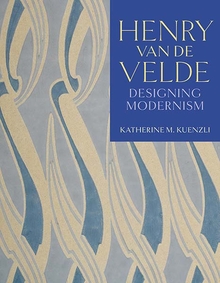
Henry van de Velde: Designing Modernism
Katherine Kuenzli, Professor of Art History
Yale University Press, 2019The painter, designer, and architect Henry van de Velde (1863–1957) played a crucial role in expanding modernist aesthetics beyond Paris and beyond painting. Opposing growing nationalism around 1900, he sought to make painting the basis of an aesthetic that transcended boundaries between the arts and between nations through his work in Belgium, France, Germany, and the Netherlands.
Van de Velde’s designs for homes, museums, and theaters received international recognition. The artist, often associated with the Art Nouveau and Jugendstil, developed a style of abstraction that he taught in his School of Applied Arts in Weimar, the immediate precursor of and model for the Bauhaus. As a leading member of the German Werkbund, he helped shaped the fields of modern architecture and design. This long-awaited book, the first major work on van de Velde in English, firmly positions him as one of the twentieth century’s most influential artists and an essential voice within the modern movement. -
Palimpsests: Buildings, Sites, Time
Edited by: Nadja Aksamija, Professor or Art History, Clark Maines, Professor of Art History, Emeritus, Phillip Wagoner, Professor of Art History
Brepols Publishers, 2017The original notion of the palimpsest—one that embodies writing, erasure, and rewriting—lends itself especially well to the interpretation of architectural monuments and landscape sites. These are by their very nature often modified significantly over time, leaving them to display a complex layering of forms and a sedimentation of meanings related to the different episodes in their ongoing lives. This volume explores and develops the idea of the architectural and site palimpsest through ten case studies drawn from different parts of the globe, from Europe and America to Africa and South Asia, and ranging in time from Roman Pompeii and medieval Cairo to modern-day Rwanda and contemporary New York. The purpose behind such chronological and cultural breadth is to provide a multiplicity of examples from which a theoretical model of the three-dimensional palimpsest can be developed, and which would be applicable to monuments and sites from different historical periods and vastly diverse geographical contexts.
While there have been many studies of buildings and sites investigating specific, synchronic episodes in their biographies, very few have approached them from the diachronic perspective of the palimpsest, that is, recognizing that the fourth dimension—that of duration—is essential to understanding them as both historic and contemporary entities. As a hermeneutic tool, the concept of the palimpsest embraces the totality of time “compressed” in a given monument or site, while permitting the extraction of a series of legible and meaningful episodes that allow us to read those palimpsests as a narrative of historical processes, whether that narrative is one of deliberate revision, or one of unintended effect. This volume presents a range of methodological possibilities nestled under a single conceptual umbrella, demonstrating how the notion of the palimpsest can become a paradigm-shifting framework for future, collaborative research in architectural and landscape history.
-
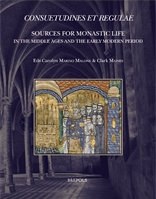
Consuetudines et Regulae: Sources for Monastic Life in the Middle Ages and the Early Modern Period
Clark Maines (with Carolyn M. Malone, eds), Professor of Art History, Emeritus
Brepols Publishers, 2014This volume addresses the nature and quality of the lives of monks and canons in Western Europe during the middle ages and the early modern period. Building on the collaborative spirit of recent work on medieval religion, it includes studies by historians of the religious orders, liturgy and ritual as well as archaeologists and architectural historians. Several studies combine the interpretation of texts, most particularly customaries and rules, with the analysis of architecture. The volume sheds new and exciting light on monastic daily life in all its dimensions from the liturgical and the quotidian to the spatial and architectural.
-
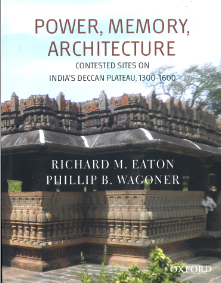
Power, Memory, Architecture: Contested Sites on India's Deccan Plateau, 1300-1600
Phillip B. Wagoner (with Richard M. Eaton), Professor of Art History
New Delhi and NY: Oxford University Press, 2014Focusing on India’s Deccan Plateau, this book explores how power and memory combined to produce the region’s built landscape, as seen above all in its monumental architecture. During the turbulent sixteenth century, fortified frontier strongholds like Kalyana, Warangal, or Raichur were repeatedly contested by primary centers—namely, great capital cities such as Bijapur, Vijayanagara, or Golconda. Examining the political histories and material culture of both primary and secondary centers, the book investigates how and why the peoples of the Deccan, in their struggles for dominance over secondary centers, promoted certain elements of their remembered past while forgetting others. The book also rethinks the usefulness of Hindu-Muslim relations as the master key for interpreting this period of South Asian history, and proposes instead a model based on parallel cultures of rulership grounded in different prestige languages, Sanskrit and Persian. Further, the authors systematically integrate the methodologies of history, art history, and archaeology in their attempt to reconstruct the past, as opposed to the standard practice of using one of these methodologies to the exclusion of the others. The book thus describes and explains the interstate politics of the medieval Deccan at a more grass-roots level than hitherto attempted.
Awarded the John F. Richards Prize by the American Historical Association, 2015
Awarded the Ananda K. Coomaraswamy Prize by the Association for Asian Studies, 2016
-
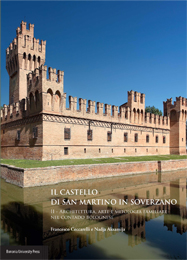
Il Castello di San Martino in Soverzano: Architettura, Arte e Mitologia Familiare nel Contado Bolognese
Nadja Aksamija (with Francesco Ceccarelli), Professor of Art History
Bononia University Press, 2013One of the most historically significant and visually captivating residential structures in Northern Italy, the miniature castle of San Martino in Soverzano is an architectural gem hidden deep in the heavily industrialized region of the Po river valley. First founded in the late medieval period as a fortified tower used to control the borderline territory between Bologna and Ferrara, the castle was gradually transformed into an original Renaissance villa that reached its heyday in the late sixteenth century. In this perio, the castle's owners, the three Manzoli brothers, modernized the architectural features of this island complex and decorated its garden and its residential spaces with one of the most extraordinary emblematic fresco cycles of the late Cinquecento. These partly preserved symbolic images were described in several encomiastic texts by a Renaissance literato, Giovan Battista Bombello, whose descriptions were used in this book as a point of departure for the interpretation of the pictures' sources and iconography. As the first comprehensive study of the architecture and fresco decorations of the castle of San Martino in Soverzano, this monograph demonstrates the monument’s exceptional artistic and cultural importance for the Bolognese, as well as the wider Italian context.
-
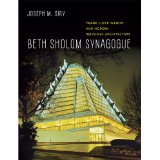
Beth Sholom Synagogue: Frank Lloyd Wright and Modern Religious Architecture
Joseph Siry, Professor of Art History
University of Chicago Press, 2012In a suburb just north of Philadelphia stands Beth Sholom Synagogue, Frank Lloyd Wright's only synagogue and among his finest religious buildings. Designated a National Historic Landmark in 2007, Beth Sholom was one of Wright's last completed projects, and for years it has been considered one of his greatest masterpieces. But its full story has never been told. Beth Sholom Synagogue provides the first in-depth look at the synagogue’s conception and realization in relation to Wright's other religious architecture. Beginning with his early career at Adler and Sullivan's architectural firm in Chicago and his design for Unity Temple and ending with the larger works completed just before or soon after his death, Joseph M. Siry skillfully depicts Wright's exploration of geometric forms and structural techniques in creating architecture for worshipping communities. Siry also examines Wright’s engagement with his clients, whose priorities stemmed from their denominational identity, and the effect this had on his designs—his client for Beth Sholom, Rabbi Mortimer Cohen, worked with Wright to anchor the building in the traditions of Judaism even as it symbolized the faith's continuing life in postwar America. With each of his religious projects, Wright considered questions of social history and cultural identity as he advanced his program for an expressive, modern American architecture. His search to combine these agendas culminated in Beth Sholom, where the interplay of light, form, and space create a stunning and inspiring place of worship.
-
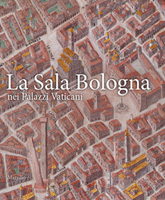
La Sala Bologna nei Palazzi Vaticani: Architettura, cartografia e potere nell’età di Gregorio XIII
Nadja Aksamija (with Francesco Ceccarelli), Professor of Art History
Marsilio Editori, 2012The Sala Bologna is one of the most inaccessible and fascinating spaces in the Vatican Palace, located between the Pope’s private apartments and the Secretariat of the Vatican State. Originally used for ceremonial purposes, it was built and decorated for the Jubilee of 1575 for the Bolognese pope Gregory XIII, Ugo Boncompagni, and precedes by five years the more famous Gallery of Maps in the Vatican Belvedere. It was conceived as part of an ambitious visual program that sought to celebrate the scientific and religious accomplishments of Gregory XIII’s court. The Sala Bologna’s majestic interior was frescoed by Lorenzo Sabatini and artists in his workshop with monumental terrestrial and celestial maps, among which the map of the city of Bologna – the largest “portrait” of a city painted during the Renaissance. This book presents for the first time the architecture and pictorial decoration of this magnificent space, which is studied from a variety of angles by a group of internationally renowned scholars. The extraordinary images published in the book are a result of an exhaustive photographic campaign by the Madrid studio Factum Arte that were also used for the production of a facsimile of the map of the city of Bologna for the new Museo della Storia di Bologna.
-
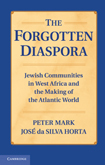
The Forgotten Diaspora: Jewish Communities in West Africa and the Making of the Atlantic World
Peter Mark (with José da Silva Horta), Professor of Art History, Emeritus
Cambridge University Press, 2011This study traces the history of early 17th-century Portuguese Sephardic traders who settled in two communities on Senegal's Petite Côte. There, they lived as public Jews, under the spiritual guidance of a rabbi sent to them by the newly established Portuguese Jewish community in Amsterdam. In Senegal, the Jews were protected from agents of the Inquisition by local Muslim rulers. The Petite Côte communities included several Jews of mixed Portuguese-African heritage as well as African wives, offspring, and servants. The blade weapons trade was an important part of their commercial activities. These merchants participated marginally in the slave trade but fully in the arms trade, illegally supplying West African markets with swords. The book not only discovers previously unknown Jewish communities but by doing so offers a reinterpretation of the dynamics and processes of identity construction throughout the Atlantic world.
-
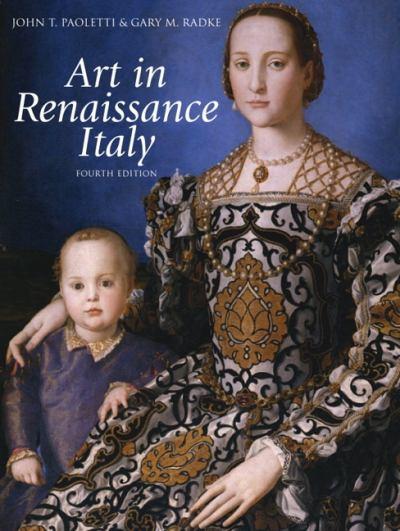
Art in Renaissance Italy
John T. Paoletti (with Gary M. Radke), Professor of Art History, Emeritus
Prentice Hall; 4th edition, 2011Art mattered in the Renaissance... People expected painting, sculpture, architecture, and other forms of visual art to have a meaningful effect on their lives,” write the authors of this introduction to Italian Renaissance art. A glance at the pages of Art in Renaissance Italy shows at once its freshness and breadth of approach, which includes thorough explanation into how and why works of art, buildings, prints, and other forms of visual production came to be. The authors also discuss how men and women of the Renaissance regarded art and artists, why works of Renaissance art look the way they do, and what this means to us. Unlike other books on the subject, this one covers not only Florence and Rome, but also Venice and the Veneto, Assisi, Siena, Milan, Pavia, Padua, Mantua, Verona, Ferrara, Urbino, and Naples—each governed in a distinctly different manner, every one with individual, political, and social structures that inevitably affected artistic styles. Spanning more than three centuries, the narrative brings to life the rich tapestry of Italian Renaissance society and the art that is its enduring legacy. Throughout, special features, including textual sources from the period and descriptions of social rituals, evoke and document the people and places of this dynamic age.
-
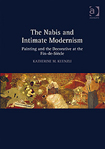
The Nabis and Intimate Modernism: Painting and the Decorative at the Fin-de-Siecle
Katherine Kuenzli, Professor of Art History
Ashgate Publishing, 2010Providing a fresh perspective on an important but underappreciated group of late 19th-century French painters, this book is an in-depth account of the Nabis’ practice of the decorative and its significance for 20th-century modernism. Over the course of the ten years that define the Nabi movement (1890–1900), its principal artists included Edouard Vuillard, Pierre Bonnard, Maurice Denis, Paul Sérusier, and Paul Ranson. Kuenzli reconstructs the Nabis’ relationship to Impressionism, mass culture, literary Symbolism, Art Nouveau, Wagnerianism, and a revolutionary artistic tradition in order to show how their painterly practice emerges out of the pressing questions defining modernism around 1900. She reveals that the Nabis were engaged with issues that are always at stake in accounts of 19th-century modernist painting, issues such as the relationship of high and low art, of individual sensibility and collective identity, of the public and private spheres.
-
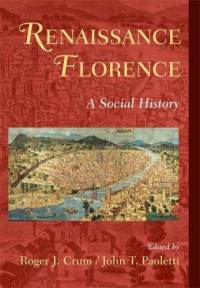
Renaissance Florence: A Social History
John T. Paoletti (with Roger J. Crum), Professor of Art History, Emeritus
Cambridge University Press, 2008This book examines the social history of Florence during the critical period of its growth and development in the early modern period, from the fourteenth through sixteenth centuries. Treating the city, its art, and its rituals as lived experiences that extended through space and time, the contributors to this volume consider well-known objects, monuments, sites, and events in the vivifying context of a variety of spaces, which are here understood as a dimension of physical, psychological, religious, and political perceptions for the city of Florence during the Renaissance. The volume provides a multi-dimensional view of Florence as it evolved into an economic powerhouse and dynamic center of artistic achievement, as well as the setting for political and religious struggles. It also demonstrates how permeable boundaries between the disciplines of history and art history have become.
-
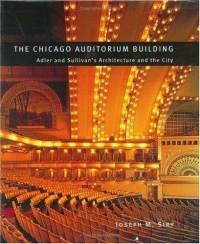
The Chicago Auditorium Building: Adler and Sullivan's Architecture and the City
Joseph Siry, Professor of Art History
University of Chicago Press, 2004When the magnificent Auditorium Building opened on Chicago's Michigan Avenue in December 1889, American and European newspapers hailed the event as a defining moment for the city, the most important since the Great Fire of 1871. The Auditorium marked Chicago's emergence both as the leading city of the Midwest and as a metropolis of international stature. In this lavishly illustrated book, Joseph M. Siry explores not just the architectural history of the Auditorium Building, but also the crucial role it played in Chicago's social history. Housing a luxurious 400-room hotel, 136 offices and stores, and a theater that could seat 4,200, the Auditorium Building was one of the earliest multipurpose civic centers in the United States, and its many technical and aesthetic innovations launched Dankmar Adler and Louis Sullivan's national reputation as creators of highly innovative architecture for large public buildings. (Frank Lloyd Wright was employed by Adler and Sullivan at the time, serving as Sullivan's draftsman.) But the Auditorium;s importance was not limited to architecture. Envisioned by its principal patron, Ferdinand W. Peck, as a means to counter the violent socialist agitation of the Haymarket era, the Auditorium Theater embodied Peck's capitalist ideal of a democratic variation on the European opera house that could provide affordable, high-class entertainment for the city's skilled workers. Covering the Auditorium from the early design to its opening, its later renovations, its links to culture and politics in Chicago, and its influence on later Adler and Sullivan works (including the Schiller Building and the Chicago Stock Exchange Building), The Chicago Auditorium Building recounts the fascinating tale of a building that helped to define a city and an era.
-
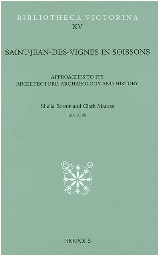
Saint-Jean-des-Vignes in Soissons, Approaches to its Architecture, Archaeology and History (Series: Biblioteca Victorina, XV)
Clark Maines (with S. Bonde, E. Boyden and K. Jackson-Lualdi; co-edited with S. Bonde), Professor of Art History, Emeritus
Brepols Press, 2003The Augustinian abbey of Saint-Jean-des-Vignes was the first monastic house founded in the diocese of Soissons during the reform movement of the 11th and 12th centuries. It played an important rôle in the architectural, technological and social history of its region until the French Revolution. The book is organized them thematically. Part I explores the various sources for study of the abbey, including standing architectural remains, archaeological material, archival sources and pictorial representations. Part II engages with the foundation of the abbey, the acquisition of its landed domain and the development of its parish. Part III considers first the Romanesque and then the Gothic phases of construction. The changing plan of the abbey is traced, and the ways in which construction influenced the functional life of the monastic community is treated. Using the unpublished customary, Part IV explores the ritual aspects of daily existence as it was lived in the Gothic chapter room and refectory. The final section, Part V, engages with infrastructure and daily life, through study of the medieval and early modern water management system at the abbey. Throughout these chapters, the focus remains both on the site of Saint-Jean-des-Vignes, and on the significant rôle it played in the larger context of regional religious life, monastic settlement, and artistic as well as economic patronage from the eleventh to the seventeenth centuries.
-
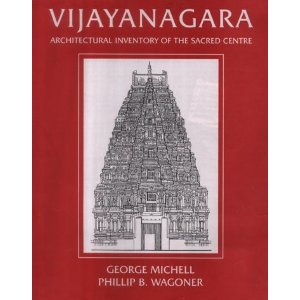
Vijayanagara: Architectural Inventory of the Sacred Centre, 3 volumes (Vijayanagara Research Project Monograph Series, Volume 8)
Phillip B. Wagoner (with George Michell), Professor of Art History
New Delhi: Manohar and American Institute of Indian Studies, 2001This architectural inventory documents all the structures of the Sacred Centre of Vijayanagara, the great ruined Hindu capital on the Tungabhadra river in central Karnataka. The Sacred Centre is of outstanding interest from the historical and religious point of view, since it is the oldest part of the Vijayanagara site, with shrines dating back to the ninth century AD. With the establishment of the capital by the Sangamas in the fourteenth century, it was the Sacred Centre that was first developed, with much building activity occurring around the Virupaksha sanctuary in Hampi. As the capital expanded under the Sangamas and Tuluvas in the course of the fifteenth and first half of the sixteenth centuries, other significant religious monuments were established in the Sacred Centre, especially in the urban quarters of Hampi, Krishnapura, Achyutapura, and Vitthalapura. Scattered along the south bank of the Tungabhadra over a distance of some 5 km, these monuments fully illustrate the evolution of the Vijayanagara architectural style. The inventory is based on more than twenty years of field work conducted by teams of architects and art historians under the guidance of the authors. It describes more than 400 structures, ranging from large-scale temple complexes, such as those dedicated to Virupaksha, Balakrishna, Tiruvengalanatha and Vitthala, to simpler and smaller shrines consecrated to a variety of deities, as well as mandapas, gateways, water features and other structures, most of which are reproduced here for the first time. The architectural descriptions, location maps, measured drawings, and photographs are divided into three volumes.
-
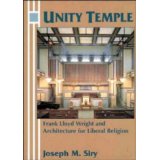
Unity Temple: Frank Lloyd Wright and Architecture for Liberal Religion
Joseph Siry, Professor of Art History
Cambridge University Press, 1998Unity Temple: Frank Lloyd Wright and Architecture for Liberal Religion is the first in-depth study of one of the seminal works of America's most renowned twentieth-century architect. Joseph Siry examines Unity Temple in light of Wright's earlier religious architecture, his methods of design, and his innovative construction techniques. Unity Temple is treated as a work of art that embodies both Wright's theory of architecture and liberal religious ideals.
-
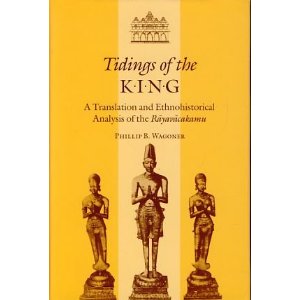
Tidings of the King: A Translation and Ethnohistorical Analysis of the Rayavacakamu
Phillip B. Wagoner, Professor of Art History
University of Hawai’i Press, 1993Tidings of the King presents an annotated translation and study of the Rayavacakamu, a medieval South Indian historiographic text in Telugu dealing with the reign of Krishnadevaraya (f.1509-1529), the best-known ruler of the Vijayanagara empire. Although often taken to be a contemporary document of Krishnadevaraya’s period, the Rayavacakamu is in fact a historiographic representation of that period written some ninety years later at the Nayaka court of Madurai, one of Vijayanagara’s most important successor states. In his ethnohistorical introduction, Phillip Wagoner argues that one of the primary purposes of the text is to articulate an ideological argument for the political legitimacy of the Madurai Nayaka regime. By historicizing Madurai’s relationship of subordination to Vijayanagara, the text affirms Nayaka legitimacy at the same time that it denies the authority of the contemporaneous Vijayanagara rulers of the Aravidu house. According to the implications of the text, the rulers of this last Vijayanagara dynasty were perceived in Madurai as bereft of ritual authority due to their loss of the fundamental source of that authority: the city of Vijayanagara itself, destroyed in 1565 by a coalition of Muslim forces.
-
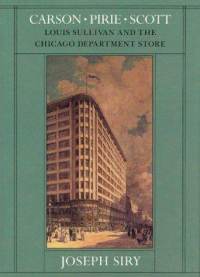
Carson Pirie Scott: Louis Sullivan and the Chicago Department Store
Joseph Siry, Professor of Art History
University of Chicago Press, 1988Long recognized as a Chicago landmark, the Carson Pirie Scott Building also represents a milestone in the development of architecture. The last large commercial structure designed by Louis Sullivan, the Carson building reflected the culmination of the famed architect's career as a creator of tall steel buildings. In this study, Joseph Siry traces the origins of the building's design and analyzes its role in commercial, urban, and architectural history.
-
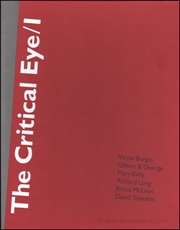
The Critical Eye/I
John T. Paoletti (with Victor Burgin, Gilbert & George, Mary Kelly, Richard Long, Bruce McLean, David Tremlett), Professor of Art History, Emeritus
Yale Center for British Art, 1984Exhibition catalogue published in conjunction with exhibition held May 16 - June 15, 1984. Includes artists Victor Burgin, Gilbert & George, Mary Kelly, Richard Long, Bruce McLean, and David Tremlett. Consists of eight paperback booklets in a printed cardboard box, incorporating a 48-page catalogue by John T. Paoletti and an accompanying bibliography, as well as an artists' publications by each of the selected artists. The artists' publications take a variety of forms such as artists' books, folded poster (Long) and a facsimile diary (Kelly).

